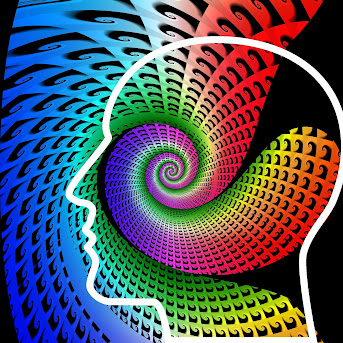Limbic System Trauma Loop Awareness, Information, Research and Resources
“Traumatized people chronically feel unsafe inside their bodies: The past is alive in the form of gnawing interior discomfort. Their bodies are constantly bombarded by visceral warning signs, and, in an attempt to control these processes, they often become expert at ignoring their gut feelings and in numbing awareness of what is played out inside. They learn to hide from their selves.”― Bessel A. van der Kolk
What are Limbic Trauma Loops?Limbic System Trauma Loop Treatment
Limbic System Trauma Loop
"The limbic system trauma loop refers to a complex interaction between traumatic experiences and the limbic system, which is a set of brain structures involved in emotions, memory, and stress response. This loop can perpetuate and intensify the impact of trauma on an individual's emotional and psychological well-being. Here's an overview of the limbic system trauma loop:1. Traumatic experience: The loop begins with the experience of a traumatic event. Trauma can result from various sources, such as physical or emotional abuse, accidents, natural disasters, or witnessing violence. Traumatic experiences overwhelm the individual's ability to cope and can have profound effects on their sense of safety, trust, and emotional well-being.
2. Limbic system activation: The limbic system, which includes structures like the amygdala, hippocampus, and hypothalamus, becomes highly activated in response to the traumatic experience. The amygdala, particularly known for its role in fear processing, may become hyperactive and overly sensitive to potential threats, leading to a heightened fear response.
3. Fight-or-flight response: The limbic system, in conjunction with the autonomic nervous system, triggers the fight-or-flight response, which is the body's physiological reaction to perceived danger. This response involves the release of stress hormones like adrenaline and cortisol, leading to increased heart rate, elevated blood pressure, and heightened vigilance.
4. Emotional dysregulation: The limbic system trauma loop can result in ongoing emotional dysregulation. Individuals may experience intense and persistent emotions related to the trauma, such as fear, anxiety, anger, or sadness. They may have difficulty managing and regulating these emotions, leading to emotional instability and mood swings.
5. Intrusive memories and flashbacks: Traumatic memories can be deeply ingrained and intrusive. The limbic system's involvement in memory processing can contribute to the reactivation of traumatic memories, leading to flashbacks or vivid recollections of the traumatic event. These intrusions can further intensify emotional distress and trigger the fight-or-flight response.
6. Hypervigilance and avoidance: The limbic system trauma loop can result in hypervigilance, where individuals remain on high alert for potential threats or danger. They may exhibit heightened sensitivity to triggers associated with the traumatic experience, avoiding certain situations, places, or people that remind them of the trauma. This avoidance can limit their daily functioning and restrict their ability to engage in normal activities.
7. Reinforcement and perpetuation: Over time, the limbic system trauma loop can become self-reinforcing. The more the loop is activated, the more sensitized and reactive the limbic system becomes, leading to an increased likelihood of further emotional dysregulation, intrusive memories, and avoidance behaviors. This cycle can make it challenging for individuals to break free from the trauma's grip and recover their emotional well-being.
Breaking the limbic system trauma loop often requires professional intervention and support. Therapies such as trauma-focused therapy, cognitive-behavioral therapy (CBT), eye movement desensitization and reprocessing (EMDR), and somatic experiencing can help individuals process and heal from the traumatic experience, regulate their emotions, and develop healthier coping mechanisms. Additionally, self-care practices, stress reduction techniques, and support from trusted individuals can contribute to the healing process." (Source: ChatGPT 2023)
Amygdala Hijack: When Emotion Takes Over Healthline
Effective Strategies to Get Out of a Trauma Loop Digital Health Buzz
Feedback Loops & Affect Regulation in Trauma Recovery ResearchGate
Key Ingredients for Successful Trauma-Informed Care Implementation PDF Download Samhsa
Limbic Revision - Love Heals Your Traumatized Brain PACEsConnection
Effective Loop Closure: Tips for the Trauma Program Manager Trauma Nursing
Effective Strategies to Get Out of a Trauma Loop Digital Health Buzz
Feedback Loops & Affect Regulation in Trauma Recovery ResearchGate
Key Ingredients for Successful Trauma-Informed Care Implementation PDF Download Samhsa
Limbic System Trauma Loop Empowered Health
Mental Health and the Limbic System Mental Health and Motivation
Persistent Post-Traumatic Headache: a Migrainous Loop or not? The Clinical Evidence BMC
PTSD Feedback Loops NewSynapses
Stuck in the Trauma Cycle; How to know you are there, and what to do to get out Khiron Clinics
The Biology of Attachment and Trauma Evergreen Psychotherapy Centre
The Limbic Loop – The Missing Piece Of Your Healing Puzzle? Ann Shippy MD
The Biocultural Trauma Feedback Loop Humboldt State University
The Inheritance of Loss: How to break a Trauma Loop Hindustan Times
Trauma Loops: Causes, Symptoms and Treatment Options Re-origen
What Is A Limbic System Trauma Loop wakelet
When Trauma Gets Stuck in the Body Psychology Today
What are Limbic Trauma Loops? Avalon Malibu
What Is A Limbic System Trauma Loop wakelet
When Your Brain is Stuck in Fight or Flight Mode. Overcoming Limbic System Impairment with Annie Hopper Dr. Ruscio
Why Understanding What Trauma Does to the Brain Helps You Heal LifeCare Centers
You can’t think your way out of PTSD. Try calming your limbic system instead. The Best Brain Possible
Healing From Trauma & Limbic Loops With Don Wood, PhD - Video
